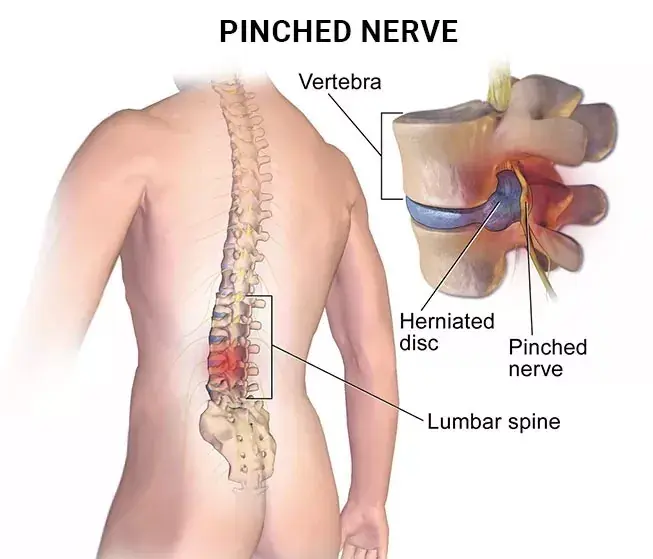The Emotional Weight We Carry
- Tamera Chapman

- Apr 22
- 3 min read

Your body doesn't just house your emotions; it expresses them. When we experience stress, anxiety, or emotional trauma, our bodies often manifest these feelings physically through tension, pain, and postural changes. The spine, serving as both our physical and energetic core, is particularly vulnerable to emotional strain. Understanding this mind-body connection can be the first step toward comprehensive healing and pain relief.
The Mind-Body Connection
This mind-body connection is why effective chiropractic care often addresses both the physical manifestations (through adjustments) and the underlying stress responses (through education, breathing techniques, and sometimes referrals to complementary care providers).
When we experience stress, our bodies respond with a complex cascade of physical reactions. What begins as an emotion quickly transforms into a series of tangible physical changes that can impact our musculoskeletal system.
During stressful moments, our bodies release cortisol and adrenaline, causing muscles to tense in preparation for "fight or flight." This tension particularly affects the neck, shoulders, lower back, and jaw. Over time, this muscle tension can pull the spine out of alignment, compress nerves, and create patterns of movement and posture that perpetuate pain even after the stressful event has passed.
What many people don't realize is that this mind-body connection works both ways. Just as emotional stress can create physical tension, addressing physical misalignments can help reduce the experience of stress, creating a powerful opportunity for healing.
How Chiropractic Care Addresses Stress-Related Pain
Chiropractic care offers several important benefits for those experiencing stress-related pain:
Spinal Adjustments Reset Alignment. When stress causes muscles to pull the spine out of proper alignment, chiropractic adjustments can gently restore vertebrae to their optimal positions. This relieves pressure on nerves, allows for proper joint movement, and often provides immediate relief that helps break the pain-stress cycle.
Muscle Tension Release. Many chiropractors incorporate soft tissue techniques that specifically target chronically contracted muscles. These techniques can release trigger points that have formed during periods of stress, allowing muscles to return to a more relaxed state.
Nervous System Regulation. Proper spinal alignment supports optimal nervous system function. Since your nervous system regulates your stress response, improvements in spinal health can help your body better manage stress physiologically.
Improved Circulation. Chiropractic adjustments enhance blood flow to areas affected by stress-related tension. This increased circulation helps remove inflammatory compounds and delivers nutrients needed for healing.
Self-Care Practices to Complement Chiropractic Treatment
While regular chiropractic care provides crucial support for stress-related pain, what you do between appointments matters just as much. Here are effective self-care practices that enhance your treatment:
Movement Medicine
Take brief walks throughout the day to improve circulation
Practice gentle stretching, especially for your neck and shoulders
Consider stress-reducing movement practices like yoga or tai chi
Set hourly reminders to check and release tension in your body
Breathing Techniques
Diaphragmatic breathing (breathing deeply into your belly rather than shallowly into your chest) activates your parasympathetic nervous system, your body's "rest and digest" mode. Try practicing 5-7 minutes of deep breathing twice daily.
Ergonomic Awareness
Maintain a proper workstation setup with the monitor at eye level
Use a chair that supports your lower back's natural curve
Take "posture breaks" every 30 minutes during seated activities
Check your phone posture—bring devices to eye level rather than dropping your head
Stress Management Practices
Progressive muscle relaxation (tensing then releasing muscle groups)
Mindfulness meditation, even 5 minutes daily can make a difference
Adequate sleep on a supportive mattress with a proper pillow height
Stress-reducing activities you enjoy (nature walks, creative pursuits, time with loved ones)
Anti-Inflammatory Nutrition
Consider incorporating foods that help manage inflammation, such as fatty fish, leafy greens, turmeric, ginger, and berries. Stay well-hydrated, as dehydration can intensify tension headaches and muscle pain.
The Power of Partnership
The most effective approach to managing stress-related pain combines professional chiropractic care with consistent self-care practices. This partnership creates a powerful synergy: chiropractic adjustments address structural issues while your daily habits maintain these improvements and build resilience against future stress.
Remember that healing is rarely linear. Some days will feel better than others, but with consistent care, you can create lasting change in how your body responds to stress.
Your chiropractor is your ally in this journey, offering adjustments, education, and guidance on how to better as well as understand and care for your body. Don't hesitate to ask questions and share your experiences during appointments, as this information helps tailor your treatment plan to your specific needs.
By addressing both the physical and emotional aspects of stress-related pain, you're not just treating symptoms, you're creating a foundation for better overall well-being.






Comments